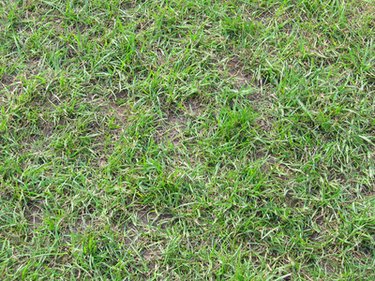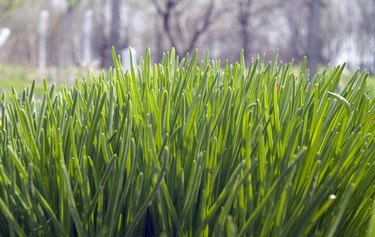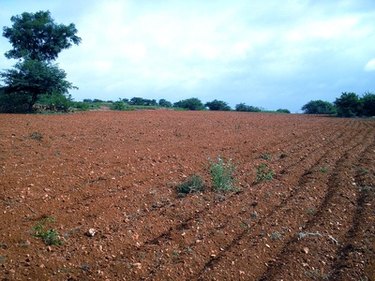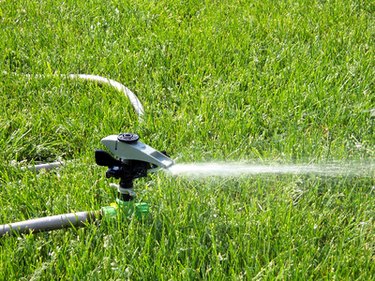Things You'll Need
Carpenter's tape measure
Sketch pad
Several small, sterile containers with lids and labels
Grass seed
Weed killer
Tiller
Organic amendments
Fertilizer
Top soil
Commercial turf grass planter or hand-held broadcast seeder
Rake or piece of chain link fence
Lawn mower
Water supply

There are two climate zones in Georgia. From Atlanta north is Zone is 8, where tall fescue grass grows well.In Zone 9, from Atlanta south, carpet grass grows best. Zoysia grass and Bermuda grass grow well throughout the state. Bermuda grass dominates the majority of the state because it is able to withstand drought conditions, low or high fertility, full sun and high humidity and survives cold temperatures. According to the website Seedland: Grasses in Georgia, the soil is mostly acid based and low in fertility. Lime usually is applied to lawns to improve growth.
Step 1

Check the soil temperature. Bermuda grass requires soil temperatures of 65 to 70 degrees. Tall fescue requires soil temperatures of 50 to 65 degrees, with daytime temperatures between 60 and 75 degrees.
Video of the Day
Step 2

Measure the part of your lawn to be seeded. Make notes about conditions by asking a series of questions: Is the lawn sunny or shady; does the lawn drain well? Will drainage need to be installed? Will an irrigation system be installed? Does the soil need amendments? Will trees, shrubs, or flower beds be planted? Will sidewalks be added?
Step 3

Figure the square footage of the lawn to buy the correct quantity of seeds. Buy and plant extra seeds for a thick ground-cover.
Step 4
Take a soil sample from five or six different areas of your lawn to your local county agent. The test will show what type fertilizer to buy and whether your lawn needs added elements.
Step 5

Kill existing weeds and grass if you are starting from scratch. Till the lawn and prepare the proper slope to allow water to run off gently. According to the Grassing website, the ideal lawn has a slope of 1 to 2 foot drop per 100 feet. This is a 1 to 2 degree slope.
Step 6

Add organic amendments and/or top soil based on the results of your soil tests. Spread fertilizer and till the soil again. This would be the time to install irrigation or sidewalks, if desired.
Step 7
Rake or drag the lawn area until it is smooth and level with the top 2 inches of soil being very fine. Use a commercial turf grass planter or hand-held broadcast seeder to sow half of the seed purchased. Sow the seed in one direction.
Step 8
Plant the second half of your seed by walking in a direction 90 degrees to the first planting, according to the Grassing website. Rake or drag the seeded area to cover the seed about one-quarter inch with fine soil. Drag a piece of chain-link fence behind a lawnmower to accomplish this.
Step 9
Water your lawn. Apply fertilizer at intervals throughout the growing season. Limit walking on the new lawn as much as possible.
Step 10
Mow your lawn 60 to 90 days after the seeds germinate to keep aggressive weeds from choking out the seedlings.
Tip
Seeds must be planted at the correct depth of one--eighth to one-quarter of an inch deep for proper germination. When planting seeds into an existing lawn, use a slit seeder to slice very narrow holes in your lawn and direct the seeds through the tubes to drop into slits.
Warning
Seeds planted at the wrong soil temperature may never germinate. Your lawn must be kept moist until seeds germinate. You may need to mist the lawn several times a day until the seeds come up.
Video of the Day